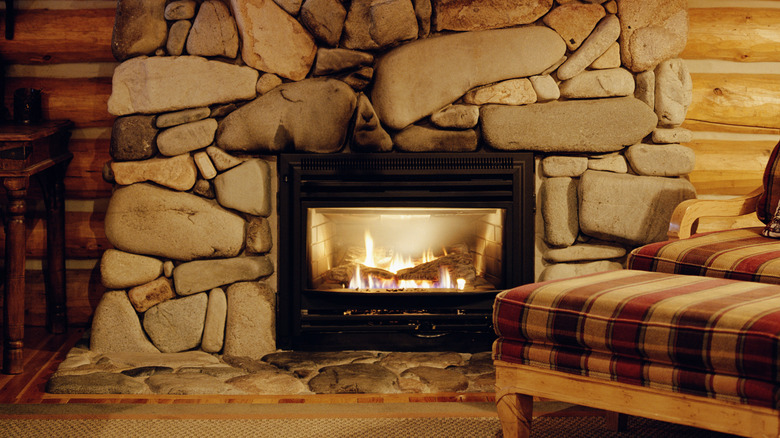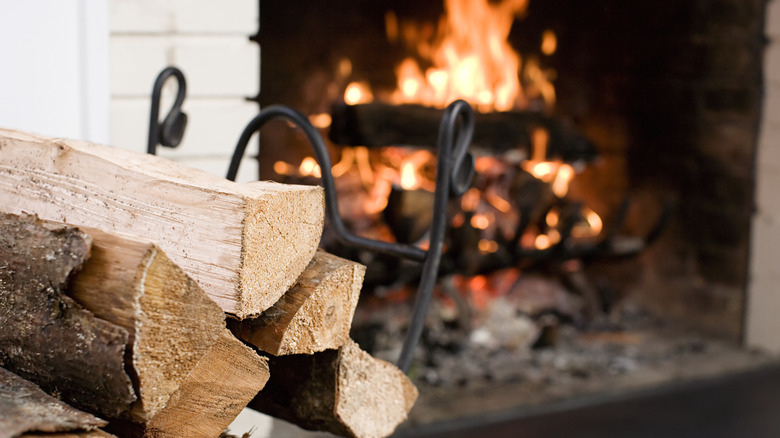Gas Vs. Wood Fireplace: Which Has A Higher Repair Cost?
The heart of the living room is found in the fireplace, creating the literal and metaphorical warmth we enjoy on a frosted Christmas morning or a marshmallow-filled summer night. So between gas and wood fireplaces, which repair cost is higher? Surprisingly, a wood fireplace has more expensive upkeep. Despite the simplicity of a wood-burning fireplace, when cracks or chemical repairs come up, they require more time-intensive and specialized labor costs. Whereas the gas fireplace has several key parts that occasionally need minor maintenance.
So how does this relate to your home journey? Well, homeowners continue to seek out fireplaces, as homes listed with fireplaces, on average, are priced nearly 15% higher than the median sale price. And like any other valuable home feature, fireplaces have their own maintenance matters that must be considered for annual home improvements.
When it comes to primary types of fireplaces found in most homes, gas and wood, they have vastly different builds and repair needs. Gas fireplaces have a metal skeleton while wood-burning fireplaces are composed of brick or stone. The central hub of a metal fireplace is the combustion chamber, where gas is burned to create heat. On the other hand, a wood-burning fireplace relies solely on a heat-resistant base, old-fashioned logs, and a chimney to correctly burn a fire and filter the smoke out of the home. Let's take a closer look at the differences in these repair costs.
Gas fireplace
Are you looking for that sleek, quiet fireplace that looks magically uniform and doesn't emit excess embers? Yes, the gas fireplace can be an enticing option for homeowners, given their low maintenance and ease of use compared to wood-burning fireplaces. However, it is important to note that this product is so much easier to use because there are many moving parts that keep it all together. Gas valve replacement alone can cost close to $600 on the higher end of the spectrum. An ignition system with a gas fireplace is also required to start the flame. There are two types: a standing pilot and an electronic ignition system. These ignition system replacements can cost a couple of hundred dollars to repair.
Whether or not the fireplace features natural gas or propane gas will also affect the cost. While propane gas is more energy efficient, natural gas is less expensive due to its wide availability. So having a gas fireplace through natural gas will reduce costs to some degree. Overall, however, a gas fireplace repair can go anywhere from a few hundred dollars to closer to $1,100.
Wood fireplace
Wood fireplaces, on the other hand, represent a level of tradition and a classic aesthetic found in several different types of homes aiming for inviting and country sensibilities. While wood fireplaces do not have the flurry of moving parts found in gas fireplaces, they demand more professional maintenance. They do require an annual inspection, for one, as the chimney needs to be checked on periodically to ensure there is no ash buildup. Chimney inspections need to scan for a second kind of buildup, and that's creosote. Creosote is a combination of chemical tars found inside the walls of a chimney that, if not handled, can result in a chimney fire.
Deferring regular maintenance on a wood fireplace can cause significant damage. Making sure to spend a couple of hundred dollars a year to maintain the interior workings of a chimney is the pivotal move needed to prevent potentially paying thousands of dollars in repair costs. Additionally, there are some other key pieces to consider. The worker costs for wood fireplaces are nearly triple that of a gas fireplace and can rack up a bill quickly. Wood fireplaces can withstand a lot of heat, but when major sections like the firebox need a replacement or a repair, that can cost anywhere from $600 to nearly $1,100. When comparing the two, wood fireplaces require more regular maintenance and can be more tedious to keep up-to-date and expensive.


